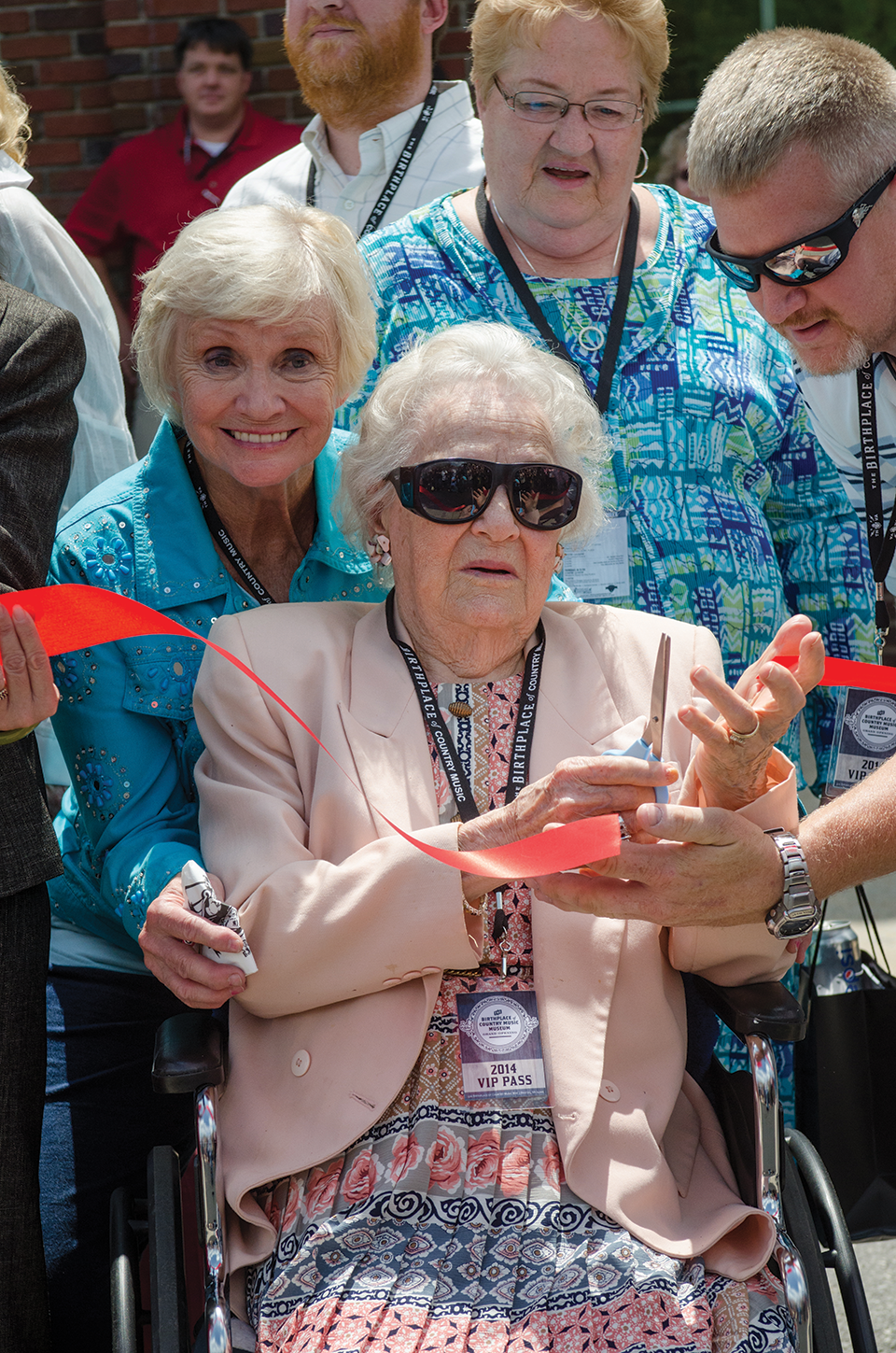

Georgia Warren and Roni Stoneman at the museum's opening (© Birthplace of Country Music; photo by Billie Wheeler)
In 1919 Frank Goodpasture Sr. and Samuel Taylor Copenhaver founded the Virginia Tennessee Motor Truck Corporation, which dealt in Defiance trucks. In the early 1920s, when Goodpasture Sr. built the current museum building, it was to house a Chrysler distributorship. The company recruited automobile dealers all around this area and as far south as north Georgia to sell Chryslers. When the Great Depression hit in the 1930s, Chrysler eliminated the distributing network and began selling their cars directly to the dealers. The Virginia Tennessee Motor Truck Company was later reorganized as Goodpasture Motor Company and began dealing in Federal trucks. They then moved their location to a site on Lee Street.
Goodpasture Sr. still owned this building, however he started using the second floor for various events and activities to generate extra income. Sporting matches, such as prize fights and wrestling bouts, were held there, along with musical concerts and dances, including some for the local African American community. Later occupants of the building included a cab company, The Palace Barber Shop, Union Shoe Store and the much-loved Tate’s News.
In 2004, after being empty for several years, the building was gifted to the Birthplace of Country Music Alliance by local businessman Steve Johnson. Originally conceptualized as a cultural heritage center, plans soon changed to the creation of a museum. Following preliminary refurbishment work, a feasibility study and some initial fundraising, the 2008 recession hit, putting plans on hold for a couple of years. By December 2012 the necessary fundraising was completed, including major support from the cities of Bristol Tennessee, and Bristol, Virginia, and state governments who recognized the importance of bringing a museum to Bristol, and work began in earnest on the museum’s development.
In late 2012, a museum content team made up of local and regional scholars, experts and musicians and led by Dr. Jessica Turner started development of the exhibit script, sourced images and objects, and worked with StudioMUSarx, Hillmann & Carr and architect Peyton Boyd on the exhibit’s physical and audio-visual design. Burwill Construction served as the building contractor for the project, and the museum opened to the public Aug. 1, 2014.
The two-day grand opening event featured a ribbon cutting with last surviving 1927 Bristol Sessions artist Georgia Warren and Roni Stoneman, daughter of Ernest and Hattie Stoneman, performances from several musicians including Carlene Carter, Corbin Haslett and Ralph Stanley; family-friendly activities and vendors,